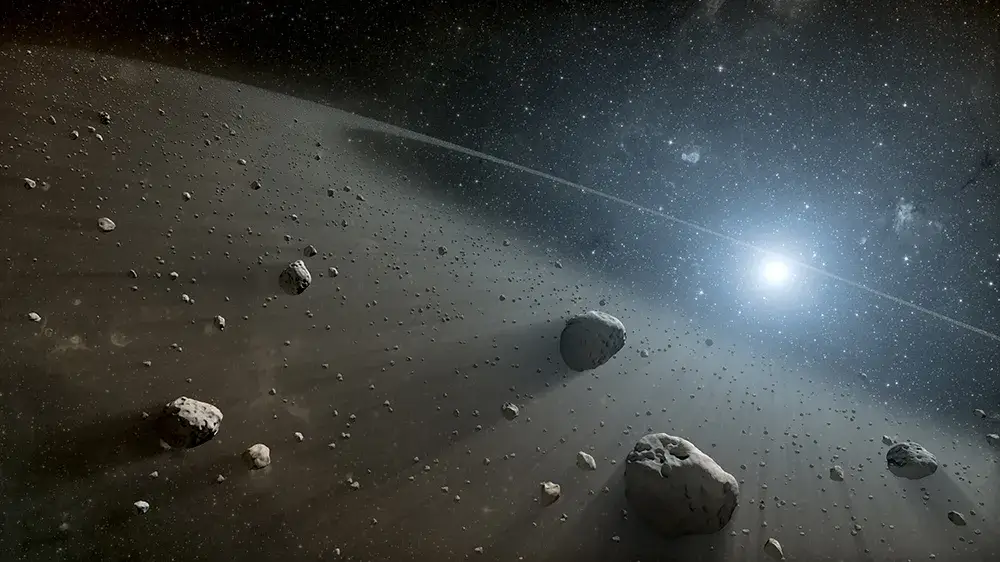World’s oldest pyramid found buried in Indonesia – predates Stonehenge and Giza
Beneath the slopes of a West Java hillside in Indonesia lies a mystery that is shaking the very foundation of archaeological understanding.

[Nov. 5, 2023: Staff Writer, The Brighter Side of News]
A giant underground pyramid hidden beneath a hillside in Indonesia far outdates Stonehenge or the Giza Pyramids and may come to rival the oldest megalithic structures ever built by human hands. (CREDIT: Creative Commons)
Beneath the verdant slopes of a West Java hillside in Indonesia lies a monumental mystery that is shaking the very foundation of archaeological understanding. Known to the local Sundanese people as Gunung Padang, meaning 'mountain of enlightenment,' this site may soon be known as the oldest known pyramid on Earth, predating Stonehenge and even the great Pyramids of Giza.
As scientists delve deeper, they find a "remarkable testament" to the ingenuity of our ancient ancestors, who created a megalithic masterpiece before the dawn of agriculture or recognizable civilization.
The Ancient Superstructure Beneath the Hill
Gunung Padang has long been sacred ground to locals who regard the hill as a 'punden berundak', translating to a stepped pyramid. These terraces ascend to its peak, hinting at the sophistication beneath. However, archaeologists are only beginning to scratch the surface of its true nature and historical significance.
Gunung Padang has long been sacred ground to locals who regard the hill as a 'punden berundak', translating to a stepped pyramid. (CREDIT: Creative Commons)
Recent discoveries by a coalition of Indonesian scientists point to the possibility of a meticulously crafted pyramid core within the hill, shaped from the natural lava flows of an extinct volcano. What's more, the pyramid's interior may harbor expansive chambers, a tantalizing thought for those eager to unlock its secrets.
Chronology of Construction: Rewriting History
Radiocarbon dating techniques have placed the initial stages of Gunung Padang's construction within the last glacial period, with some estimates reaching as far back as 27,000 years ago. To put this staggering timeline into perspective, it predates Göbekli Tepe in Turkey—currently recognized as the world's oldest megalithic structure—by a significant margin.
The megalithic stones seen on the surface of Gunung Padang. (CREDIT: Natawidjaja et al., Archaeological Prospection , 2023)
This Indonesian site's story unfolded over millennia, with a deep history told in layers of human endeavor. Researchers, including geologist Danny Hilman Natawidjaja from Indonesia's National Research and Innovation Agency, employed advanced methods like core drilling, ground penetrating radars, and subsurface imaging from 2011 to 2015 to probe the site's complexities.
The Phases of Gunung Padang's Evolution
Natawidjaja's team has discovered that the pyramid was built in intricate stages. The oldest section, about 30 meters below the surface, likely dates from between 25,000 and 14,000 BCE. After a period of abandonment, a resurgence of construction activity around 7900 to 6100 BCE saw the expansion of the core mound with a variety of materials, including rock columns and gravelly soils.
Related Stories
Remarkably, around 6000 to 5500 BCE, these ancient builders seemed to intentionally bury older sections of the site, a practice which raises many questions about their motives and the meanings behind such actions.
The last known phase of Gunung Padang's construction occurred between 2000 to 1100 BCE when builders added the final layers of topsoil and stone terraces that we see today. These terraces, distinctive of a punden berundak, offer the most visible and intriguing evidence of advanced building techniques and long-term cultural significance.
Mastery in Masonry: The Skill of Ancient Builders
The researchers have found that "the builders of Unit 3 and Unit 2 at Gunung Padang must have possessed remarkable masonry capabilities," challenging the conventional view of prehistoric societies as simple hunter-gatherer cultures. This acknowledgment points to a previously underestimated complexity within ancient societies of the region.
Simple reconstruction of Gunung Padang with all four units and their various burial levels. (CREDIT: Natawidjaja et al., Archaeological Prospection , 2023)
The dedication to modifying and reoccupying the site over thousands of years suggests that Gunung Padang was of great importance to the people who built it. This continuity of occupation and enhancement underlines the site's enduring cultural and possibly spiritual significance.
The Journey Ahead: Excavation and Exploration
The heart of Gunung Padang still holds many secrets. Seismic studies have revealed the presence of large hidden cavities and chambers within, with some being up to 15 meters in length and with ceilings reaching an impressive height of 10 meters.
The surface stones of Gunang Padang. (CREDIT: Ali Trisno Pranoto/Getty Images)
The research team's ambition is to explore these hidden spaces further. They plan to drill into these areas and, upon encountering any chambers, to lower cameras into the depths to illuminate what has been enshrouded in darkness for millennia.
This investigative odyssey at Gunung Padang serves as a shining example of how multidisciplinary approaches—melding archaeological, geological, and geophysical techniques—can reveal the grandeur of ancient civilizations. It stands as a testament to the power of technology and collaborative effort in peeling back the layers of time.
With each discovery, Gunung Padang is poised to redefine our understanding of the prehistoric world. It may not only rival but also precede the world's most famous megalithic sites. The narrative of human history may need to be rewritten, with this Indonesian pyramid taking its place as a crowning achievement of human prehistory.
In the years to come, we can expect to hear much more about Gunung Padang as it emerges from the mists of time, revealing its stories and the remarkable civilization that built it. Its legacy, etched in stone and soil, beckons us to ponder the marvels our ancestors were capable of creating long before the wheels of recorded history began to turn.
Note: Materials provided above by The Brighter Side of News. Content may be edited for style and length.
Like these kind of feel good stories? Get the Brighter Side of News' newsletter.



